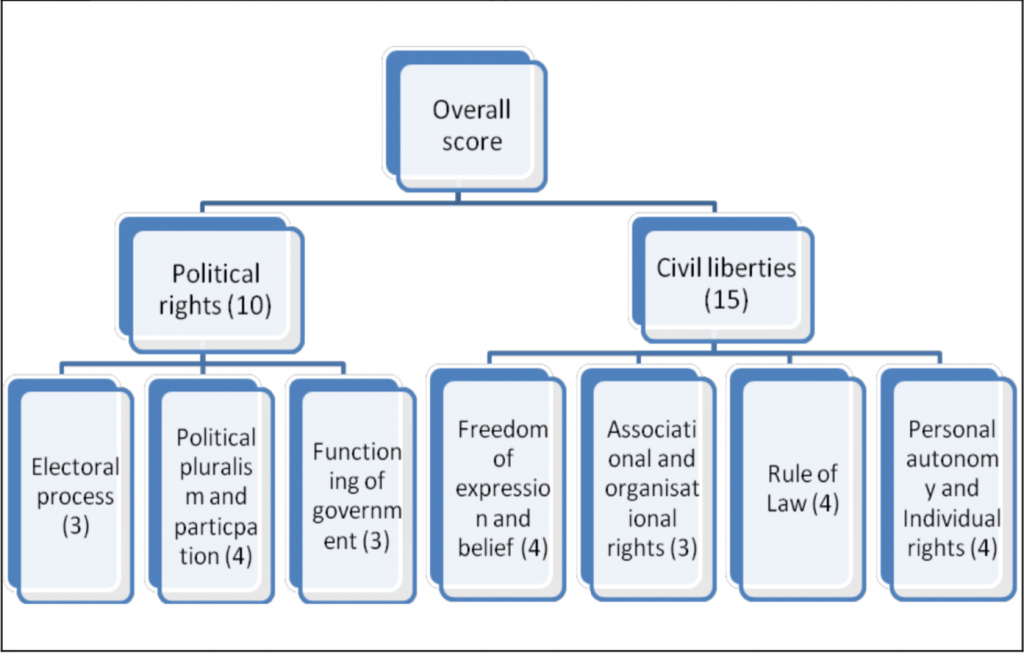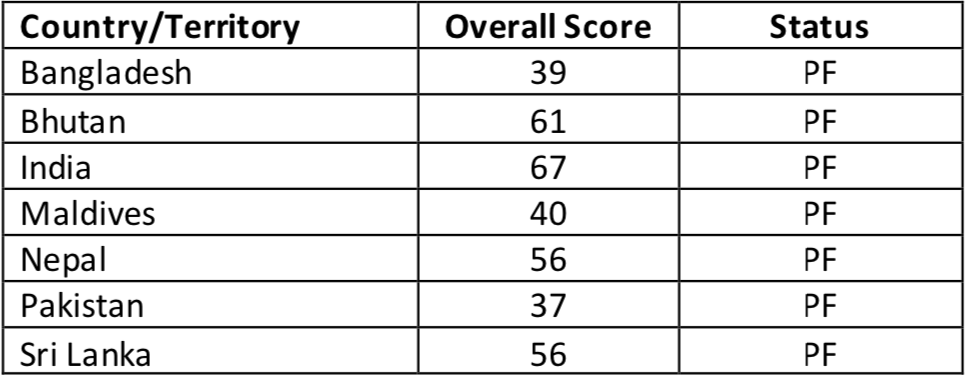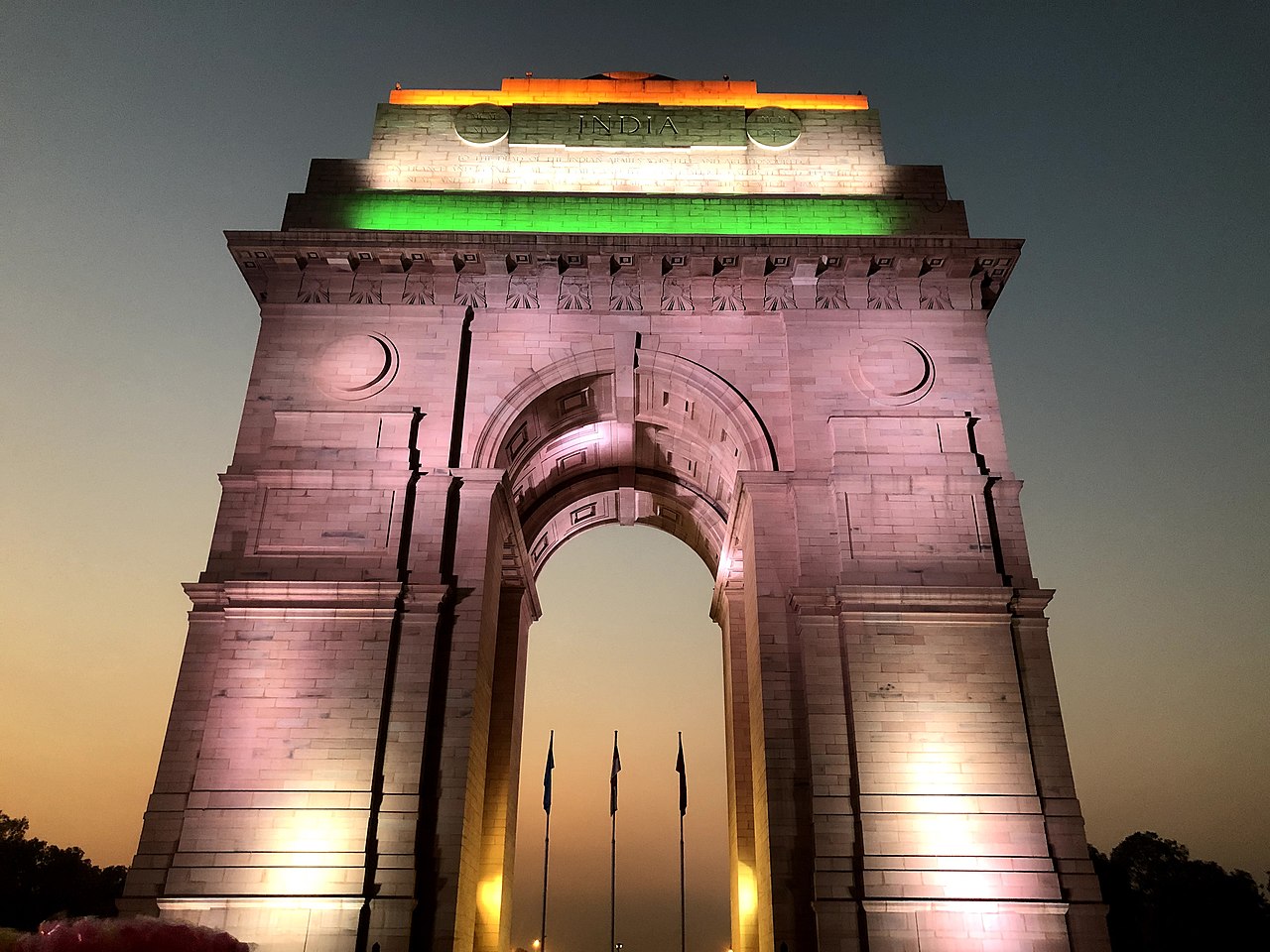Summary
According to one of the most widely used indexes to assess democratic quality across the world, the Freedom House Index, India is not a full democracy anymore. This is mainly due to the erosion of civil liberties rather than the conduction of free and fair elections, which remain of a relatively high standard. Subsequently, the entire South Asian region is also now democracy-free.
Introduction
Freedom House (FH), a United States-based non-governmental organisation, published its annual report on the status of democracy in the world. One of the major highlights of the report is that India has lost its ‘Free’ status and is now considered only ‘Partly Free’. This has happened only twice since 1973 when the FH launched its democracy score. These were in 1975-76, when Prime Minister Indira Gandhi declared a state of Emergency, effectively suspending democracy; and during the 1990s, when the assassination of Prime Minister Rajiv Gandhi in 1991 and the communal riots that followed the destruction of the Babri Majsid in 1992 generated a state of instability and erosion of civil liberties. Since 1998, however, India had always remained in the ‘Free Countries’ club.
Methodology of the FH Index
The FH index assigns a score (0-4) to 25 indicators for a maximum theoretical score of 100, which would indicate complete freedom. The overall score is calculated as the sum of the two main sub-indexes: political rights and civil liberties. Each sub-index is made up of a number of indicators (Figure 1).
In the case of India, FH calculates two separate scores for India and Jammu and Kashmir. The FH index is one of the most widely used metricsfor assessing regimes across the world and across time.
Figure 1: Freedom House Index Methodology

Note: In parenthesis is the number of questions for each indicator.
Source: Freedom House Methodology (https://freedomhouse.org/reports/freedom-world/freedom-worldresearch-methodology).
India’s Democratic Backsliding
India’s democracy score has been declining over the last few years (Table 1).
Table 2: India FH Sub-indexes Scores 2020-21

Notes: F = Free; PF = Partly Free; NF = Not Free. In parenthesis is the FH status
Source: Freedom House 2020 Report.
In the report, FH attributes the change in status to “a multiyear pattern in which the Hindu nationalist government and its allies have presided over rising violence and discriminatory policies affecting the Muslim population and pursued a crackdown on expressions of dissent by the media, academics, civil society groups, and protesters.”
More specifically, FH identifies four key developments that account for the relatively steep decline (from 71 to 67) of India’s democracy score. First, the riots in Delhi in February 2020 whereby at least 50 people died in the protests against a recently-enacted amendment to the citizenship law; second, the repeated filing of criminal charges under the colonial-era sedition law against journalists, students and activists; third, the hardship suffered by internal migrants during the lockdown when they were largely unable to access basic necessities; and, finally, the decision by the Supreme Court of India to acquit senior Bharatiya Janata Party leaders who had been accused of playing a role in the destruction of the Babri Masjid in 1992.
In other words, India lost its status not because of an erosion of ‘political rights’, which mostly relate to the conduction of free and fair elections, but because of a deterioration of ‘civil liberties’ (Table 2).
Table 2: India FH Sub-indexes Scores 2020-21

Source: Freedom House 2021 Report
Downgrading India’s status is consistent with democratic theory. In its simplest formulation, a country must conduct free and fair elections to qualify as a democracy and India’s elections do meet this important criterion. This is, however, a necessary but not sufficient condition. What happens between the elections is equally important. It is in this realm that FH has recorded the most significant erosion of freedom in India since 2018, which eventually led to the downgrading to the ‘Partly Free’ category.
India’s new status is also consistent with scholarly work on ‘competitive authoritarianism’ – a type of regime where the formal democratic institutions remain in place, but their functioning is distorted to such an extent that they fail to meet democracy’s minimum standards. According to James Manor, this is indeed the more appropriate label to describe India’s regime.
According to FH, the entire South Asian region is now democracy-free, as all the countries stop short of qualifying as full democracies(Table 3). India remains the most democratic country of the region, well ahead of all its neighbours.
Table 3: India FH Sub-indexes Scores 2020-21

Source: Freedom House 2021 Report
Conclusion
India’s democratic backsliding is part of a global trend. Between 2005 and 2020, the number of ‘Free’ countries declined from 89 to 82, while the ‘Not Free’ countries increased from 45 to 54. The countries in the middle – hybrid regimes as political scientists call them – accounted for 59 countries in 2020, stable from 2005. With the change in status of India, less than 20 per cent of the world population livesin full democracies, the lowest since 1995.
. . . . .
Dr Diego Maiorano is a Visiting Research Fellow at the Institute of South Asian Studies (ISAS), an autonomous research institute at the National University of Singapore (NUS). He can be contacted at dmaiorano@nus.edu.sg. The author bears full responsibility for the facts cited and opinions expressed in this paper.
Photo credit: Wikipedia
-
 More From :
More From :
-
 Tags :
Tags :
-
 Download PDF
Download PDF


